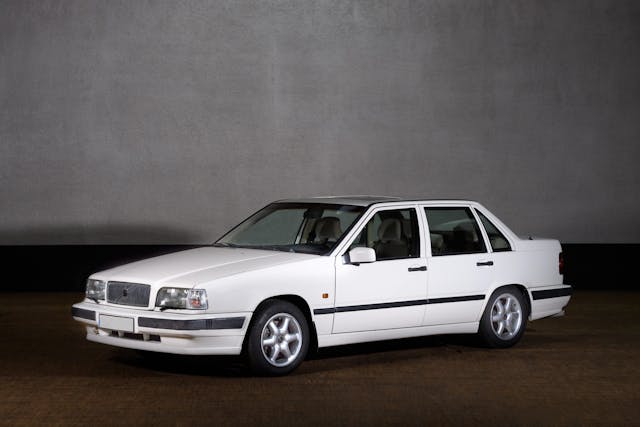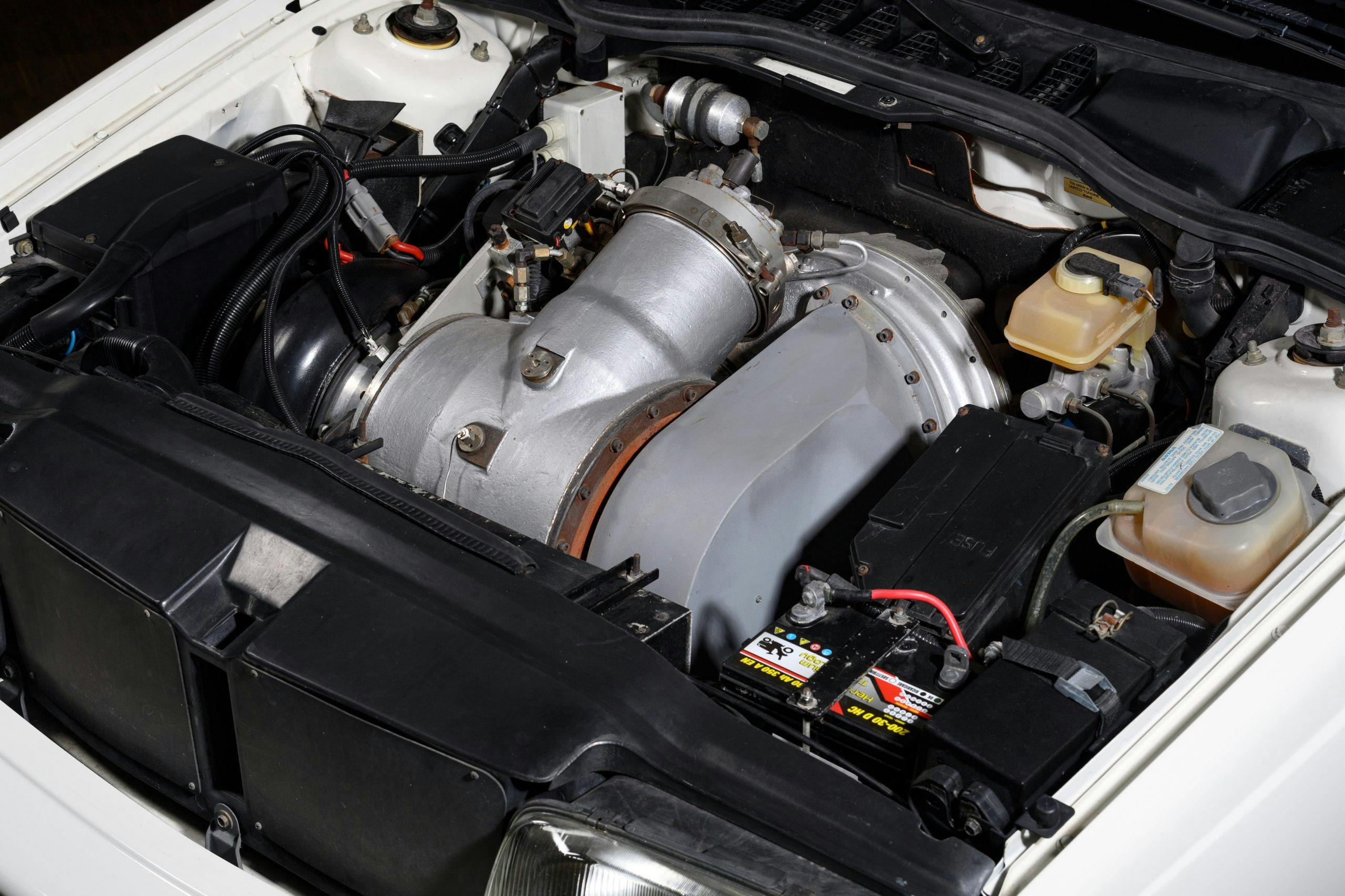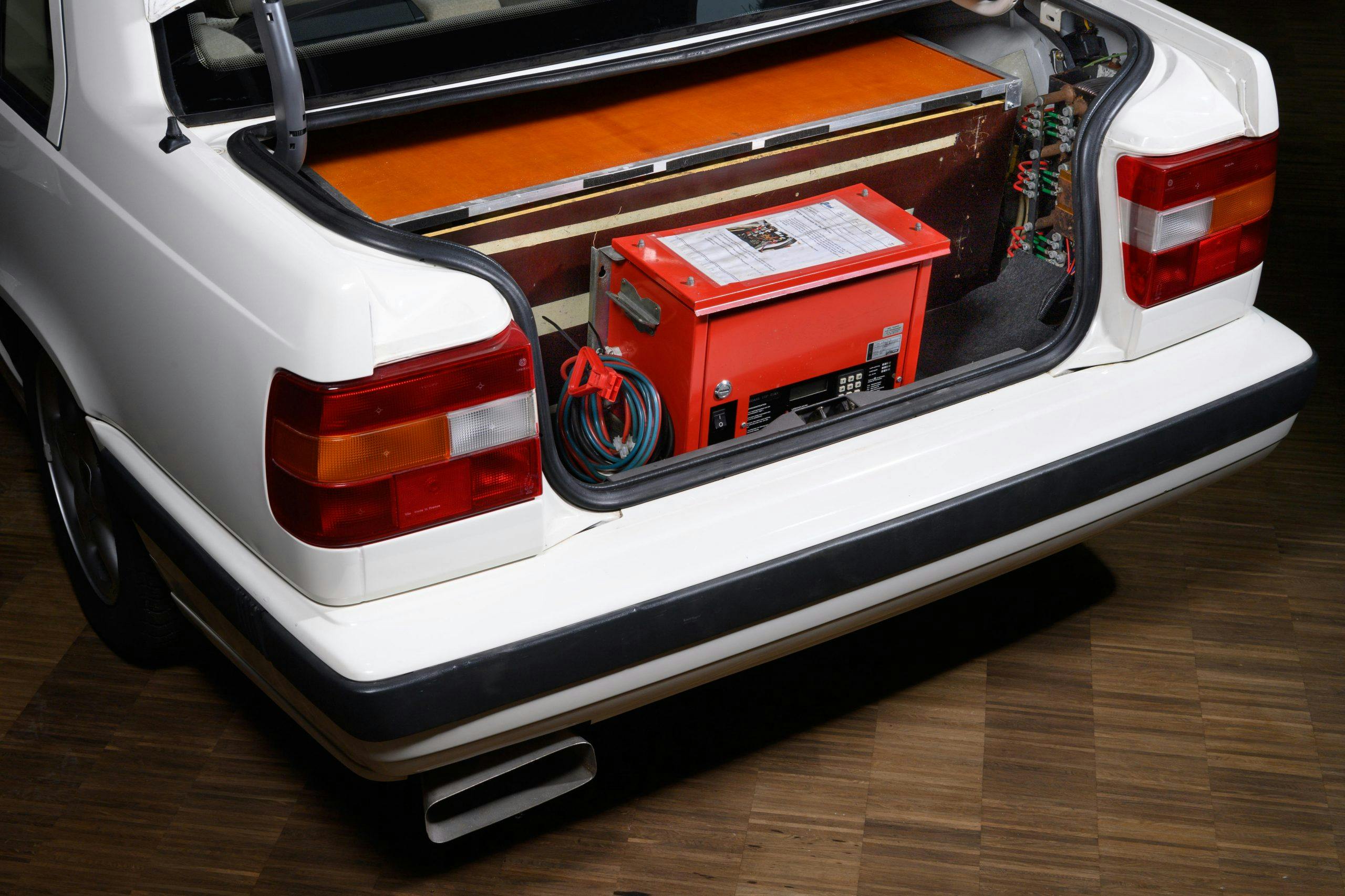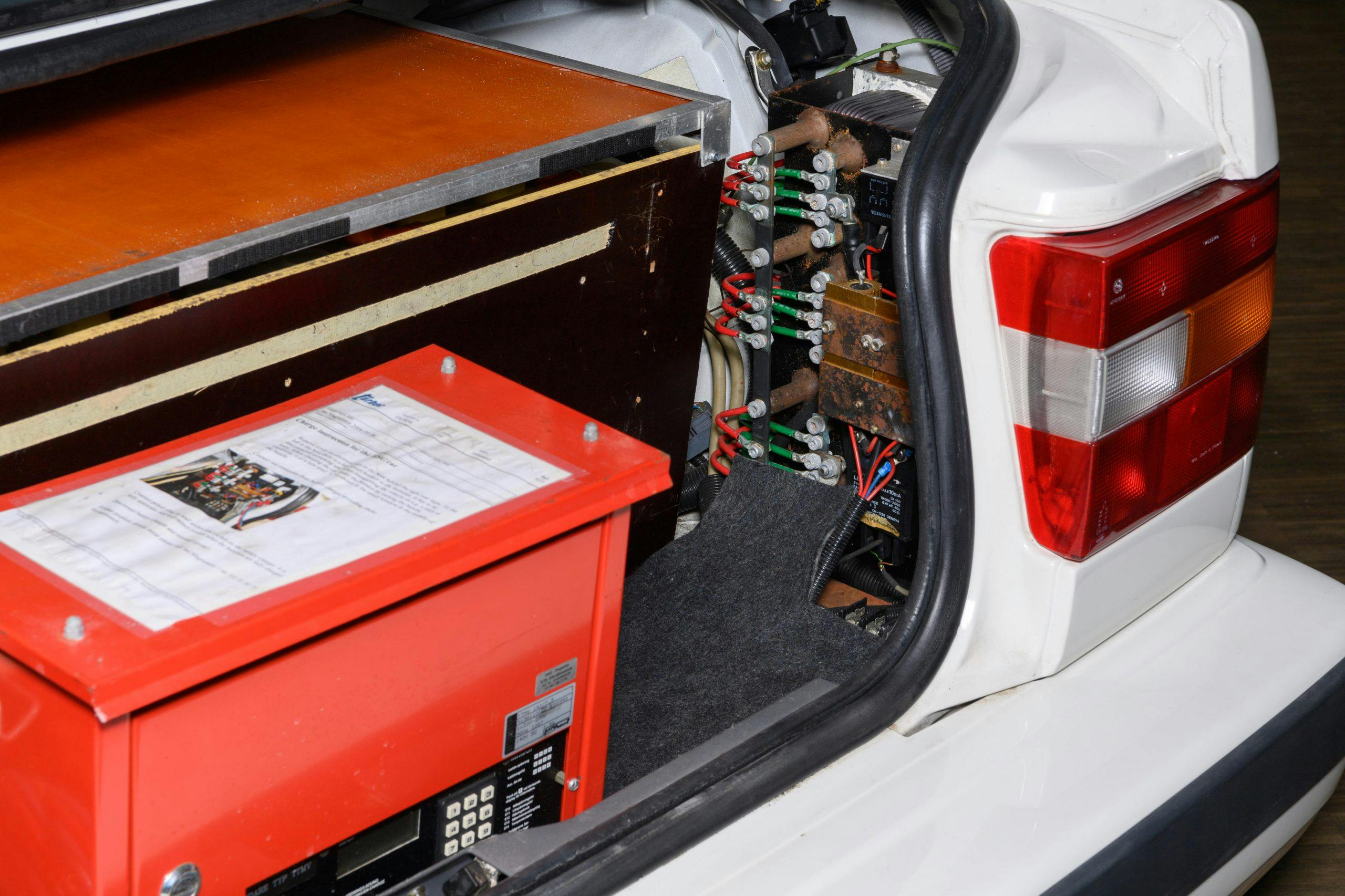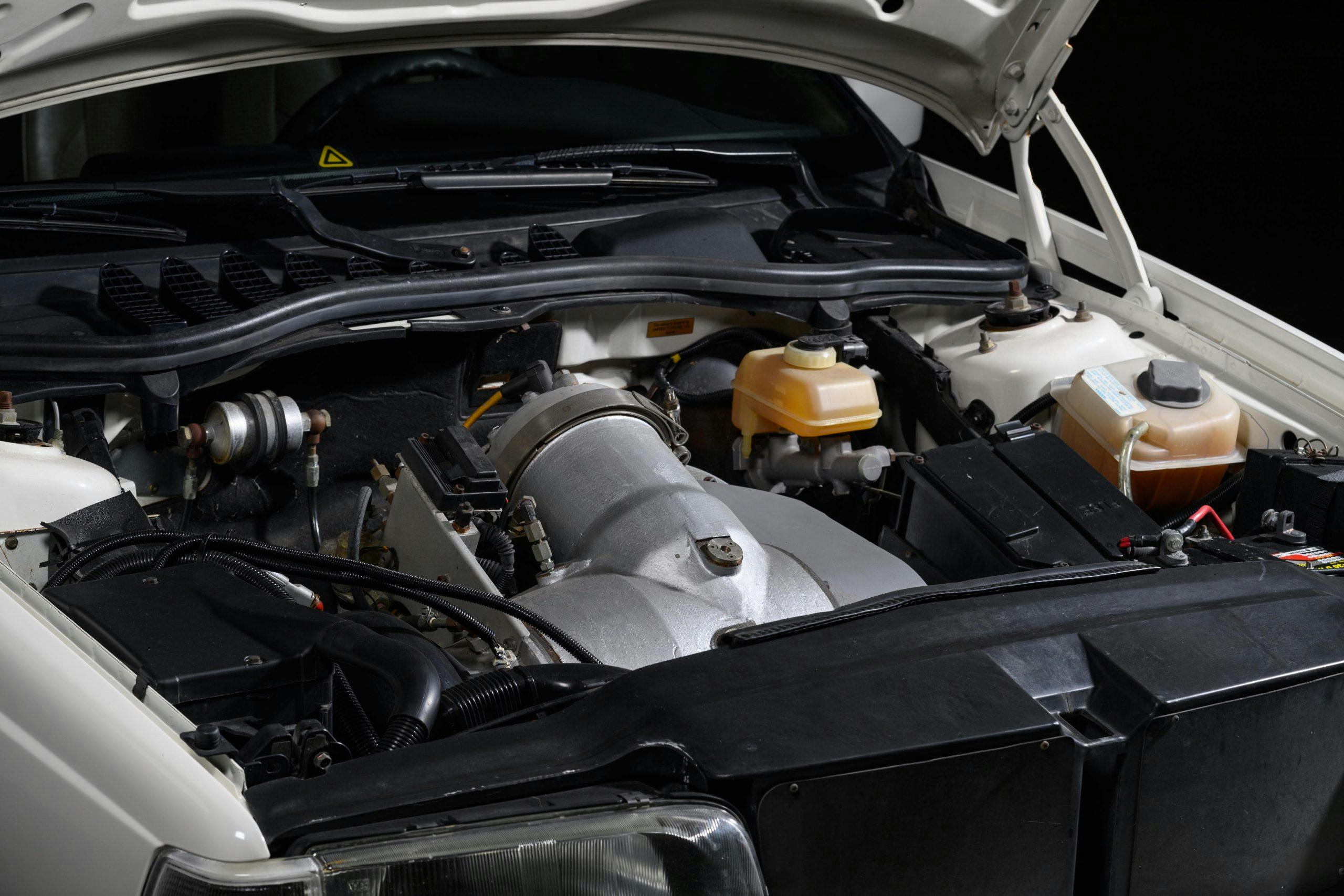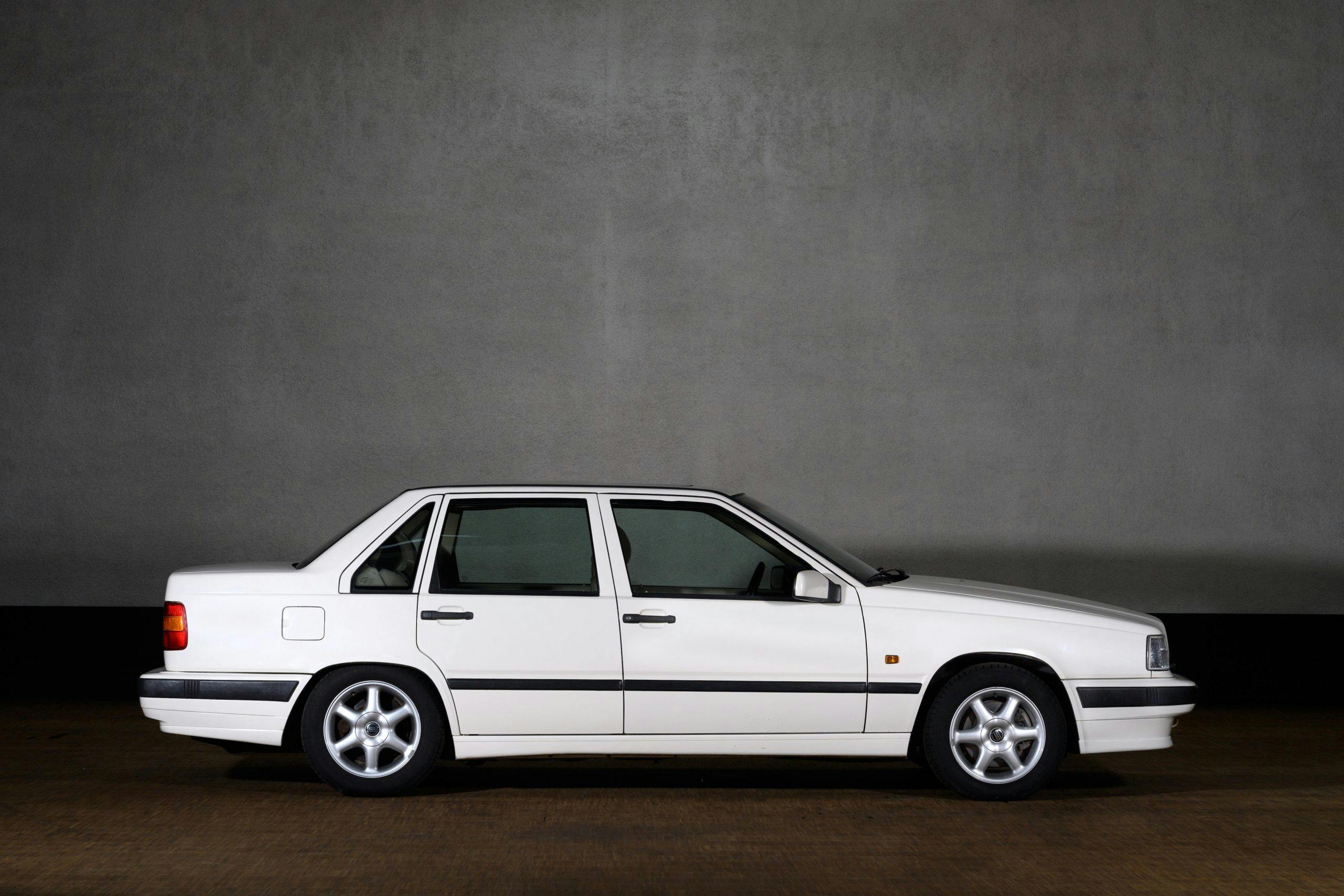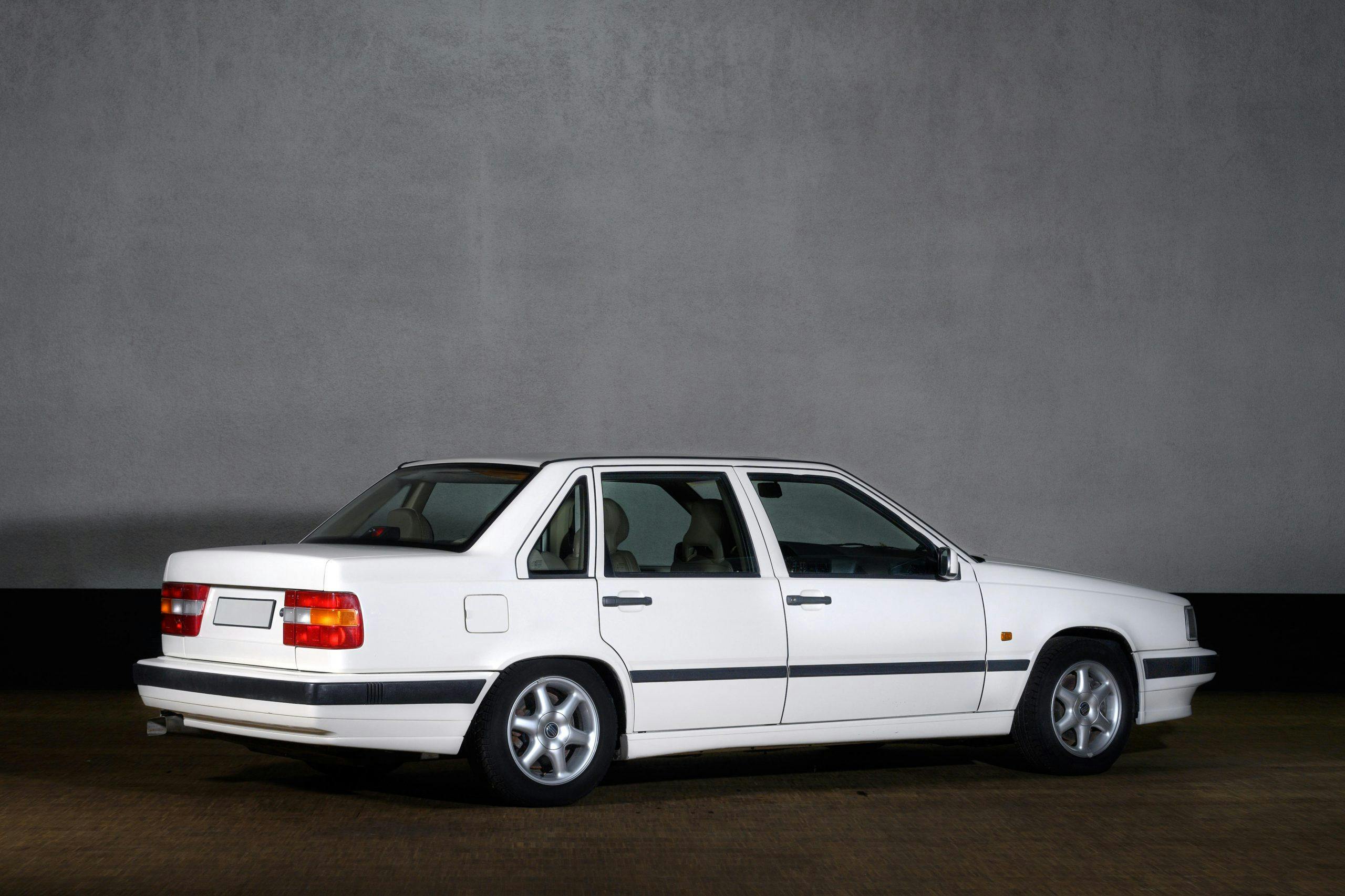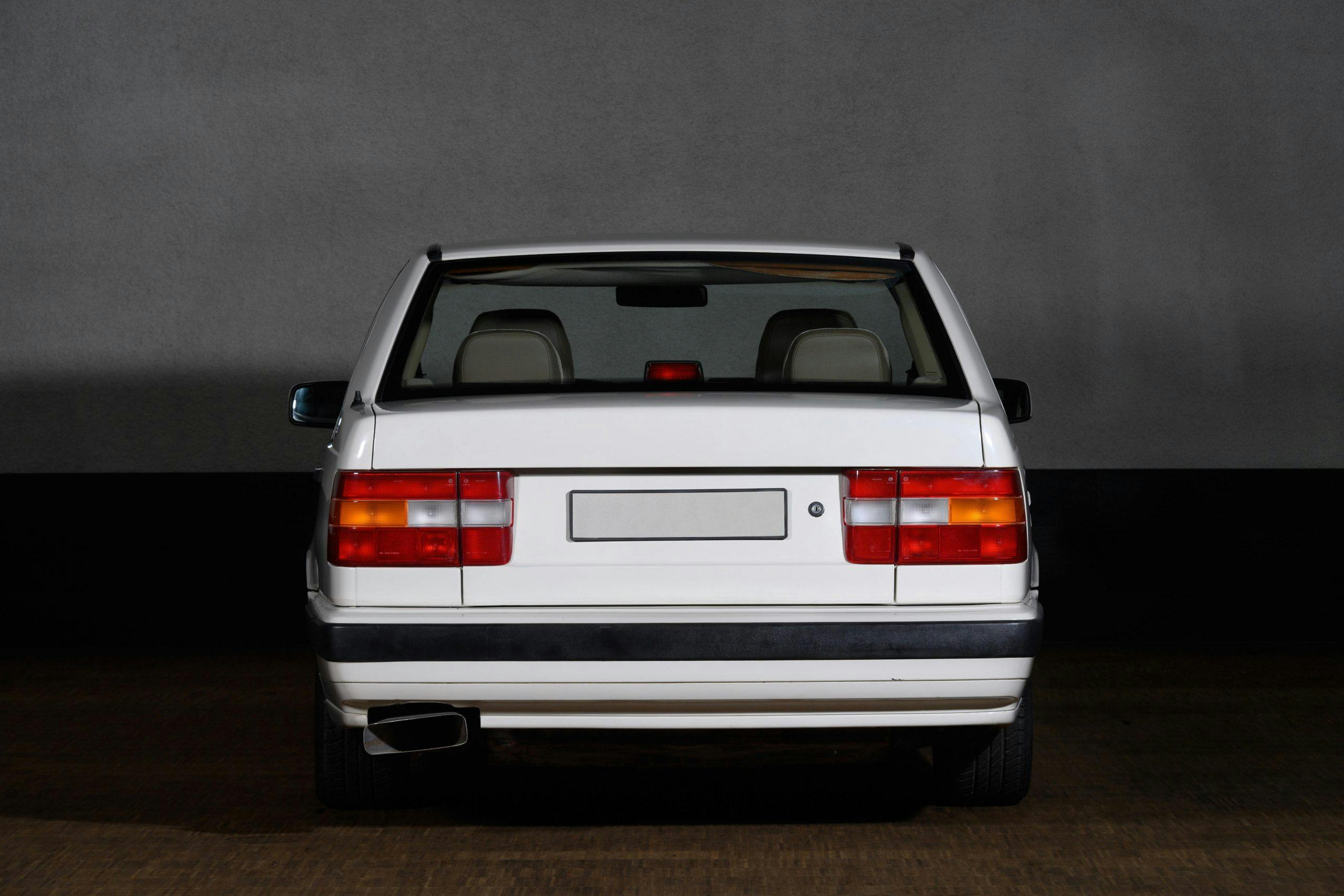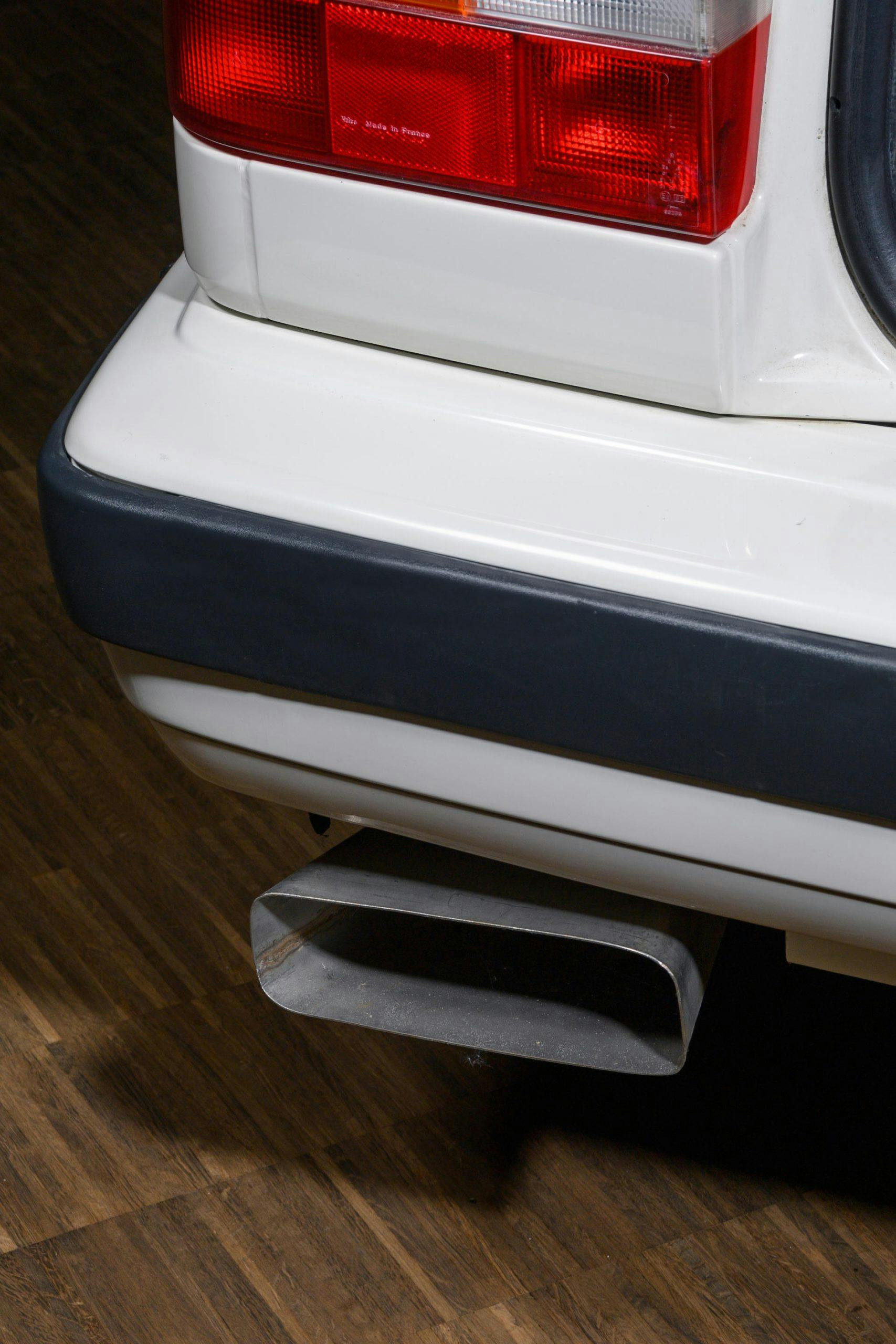Volvo’s turbine-electric hybrid was a ’90s wonder box
Despite many failed attempts to bring a turbine-powered car to production, automakers over the years have had a hard time letting the idea go. (Truth be told, we can’t relinquish our fascination with it either.) Even usually subdued Volvo experimented with a turbine car in the 1990s, and one will traverser le bloc at Bonhams’ Paris Auction on February 3.
In response to increasing pressure from legislators to produce “green” alternatives to gasoline-powered automobiles, Volvo tried to lasso a double rainbow when it built a pair of gas turbine/electric hybrid prototypes in 1992. Among its projects featuring this bonkers drivetrain was a futuristic-looking concept called the ECC (Environmental Concept Car), which Volvo unveiled at the 1992 Paris show. The main function of the ECC was as a design study, and the car’s tasteful curves—completely out of character for the traditionally boxy Volvo—ended up informing the eventual Volvo S80 sedan. The turbine-electric portion of the project never went further than the concept stage, but the attempt was both ambitious and fascinating.
It would seem that another example of this prototype powerplant went into the otherwise conventional 1993 Volvo 850 sedan that Bonhams will sell, perhaps fittingly, in Paris. Magnifique, really.
Looking back, it makes sense that Volvo would at least flirt with the idea of a turbine-powered car, since it already had experience building aviation gas turbines through its subsidiary, Volvo Flygmotor. Automotive turbine engines had been studied at Volvo in the 1970s, as well. In the ECC and the 850 hybrid alike, the gas turbine provides energy for the electric motor and nickel-cadmium battery via a high-speed generator, without ever directly powering the front wheels. The generator also functioned as a starter motor, which is a trick that modern hybrids are using to great effect with new 48v systems (the Volvo XC60 and XC90 among them).

So why didn’t the 1993 Volvo 850 Gas Turbine/Electric Hybrid move beyond the prototype stage? The same ol’ problem: cost per mile. Bonhams explains, “While the gas turbine is an elegant propulsion unit in engineering terms, being simple in construction and relatively light in weight, its inferior part-load fuel economy has proven an insurmountable obstacle for its use in passenger cars, even when combined with an electric motor.”
Of course, minuscule gas mileage would be a concern for everyday drivers today, but maybe not so much for a collector who’s looking for something unique to drive to the next car show. There’s plenty of life, too, left in this outlandish Swedish hybrid: The odometer shows only 4000 test-track kilometers (2485 miles). We’ve reached out to Volvo to confirm our suspicions that this 850 may have been the development mule to test the powertrain for the ECC concept.
Admit it—you’d like to take this thing for spin as much as we would, just to hear the distinctive note of its turbine engine. Next month, the car’s new owner will get to do exactly that, and no doubt there will be plenty of wide-eyed onlookers.
